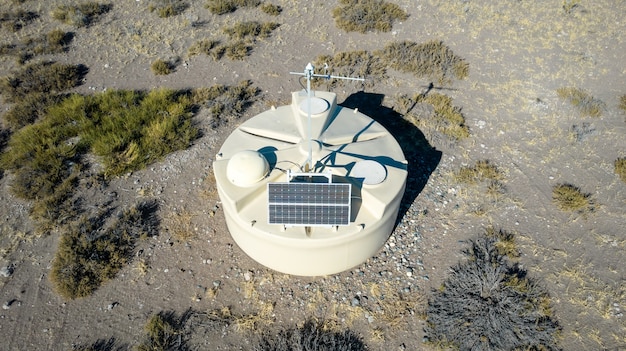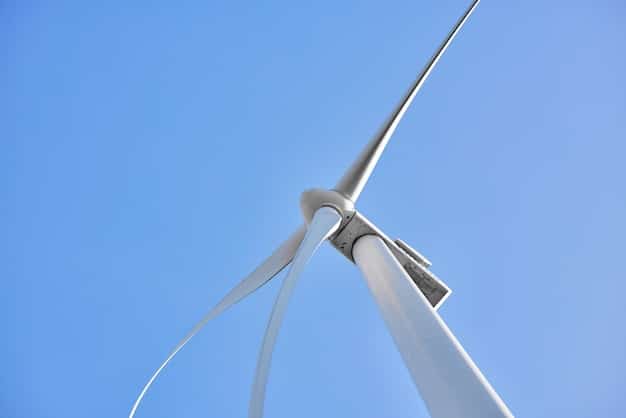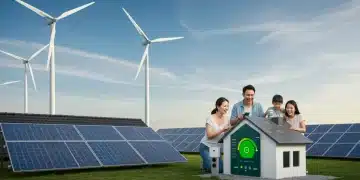US Efforts in Global Climate Change: Strategies & Impact

The United States is addressing climate change globally through initiatives like rejoining the Paris Agreement, investing in clean energy, and forming international partnerships to reduce emissions and promote sustainable development.
The United States recognizes the urgent need to address climate change not only domestically but also on a global scale. With its vast resources and technological capabilities, the US is implementing various strategies to combat climate change worldwide. This article explores how is the US working to combat climate change on a global scale, examining its policies, investments, and international collaborations aimed at mitigating the effects of climate change and promoting a sustainable future for all.
Understanding US Climate Change Commitments
The US commitment to combating climate change on a global scale is multifaceted, encompassing diplomatic efforts, financial investments, and technological innovation. These commitments are designed to reduce greenhouse gas emissions, promote clean energy solutions, and build resilience to climate impacts worldwide.
Rejoining the Paris Agreement
One of the first actions taken by the Biden administration was to rejoin the Paris Agreement, signaling a renewed commitment to international climate cooperation. This agreement provides a framework for countries to set and achieve emissions reduction targets.
Setting Ambitious Emission Reduction Targets
Alongside rejoining the Paris Agreement, the US has set ambitious goals for reducing its own emissions, aiming to achieve a 50-52% reduction from 2005 levels by 2030. This commitment serves as a benchmark for other nations.
- Promoting renewable energy sources like solar, wind, and geothermal.
- Enhancing energy efficiency standards for buildings, appliances, and vehicles.
- Investing in carbon capture and storage technologies.
The commitment to reduce emissions includes promoting renewable energy sources, enhancing energy efficiency standards, and investing in carbon capture technologies.

Key US Initiatives for Global Climate Action
The US has launched several initiatives to support global climate action, addressing various aspects of climate change from mitigation to adaptation. These initiatives involve both governmental and non-governmental organizations working collaboratively to achieve impactful results.
The Global Methane Pledge
Methane is a potent greenhouse gas, and reducing its emissions is critical for limiting near-term warming. The US has spearheaded the Global Methane Pledge, encouraging countries to reduce methane emissions by at least 30% from 2020 levels by 2030.
The Clean Energy Transition Partnership (CETP)
The CETP is an international initiative aimed at accelerating the global transition to clean energy. Through the CETP, the US collaborates with partner countries to deploy clean energy technologies, share best practices, and mobilize investments.
The US is also investing in technologies to reduce methane emissions across various sectors.
- Developing advanced leak detection and repair technologies.
- Supporting projects that capture methane from landfills and convert it into energy.
- Working with the agricultural sector to reduce methane emissions from livestock and rice cultivation.
These projects help to deploy clean energy technologies and share best practices.
International Partnerships and Climate Diplomacy
The US recognizes that climate challenges are global and require international cooperation. To this end, the US is actively engaged in climate diplomacy and building partnerships with countries around the world to enhance climate action.
Bilateral Climate Agreements
The US has established bilateral climate agreements with various countries to collaborate on specific climate initiatives. These agreements provide a framework for exchanging knowledge, coordinating policies, and implementing joint projects.
Supporting Developing Nations
The US is committed to supporting developing nations in their efforts to address climate change. This support includes providing financial assistance, technical expertise, and technology transfer to help these countries transition to low-carbon economies and build resilience to climate impacts.
The US also engages with international organizations such as the United Nations and the World Bank to advocate for climate action and mobilize resources for climate projects.
Investing in Clean Energy Innovation
Innovation is a key driver of climate action, and the US is investing heavily in clean energy technologies to accelerate the transition to a sustainable future. These investments span various sectors, from renewable energy to energy storage and carbon capture.
Research and Development Programs
The US government supports numerous research and development programs aimed at advancing clean energy technologies. These programs focus on areas such as solar energy, wind energy, advanced batteries, and carbon capture.
Public-Private Partnerships
To accelerate the deployment of clean energy technologies, the US is fostering public-private partnerships. These partnerships leverage the resources and expertise of both the government and the private sector to develop and commercialize innovative solutions.

Investing in clean energy aims to drive down the cost of clean technologies and make them more accessible to developing countries, fostering global adoption of sustainable practices.
Addressing Climate Change at Home
While the US is actively working to combat climate change on a global scale, it is also implementing policies and initiatives at home to reduce its own carbon footprint. These domestic actions are essential for demonstrating leadership and credibility on the international stage.
The Inflation Reduction Act
The Inflation Reduction Act includes significant investments in clean energy and climate action. It provides tax credits and incentives for renewable energy projects, electric vehicles, and energy efficiency upgrades.
Regulations and Standards
The US government is also implementing regulations and standards to reduce emissions from various sectors. These include fuel efficiency standards for vehicles, emission standards for power plants, and building codes that promote energy efficiency.
By reducing its emissions at home, the US sets a powerful example for other countries to follow, reinforcing its commitment to global climate action. Such policies also encourage innovation and investment.
Overcoming Challenges and Future Prospects
Despite the progress made, the US and the global community face significant challenges in combating climate change. These challenges include technological hurdles, financial constraints, and political obstacles.
Technological Hurdles
Developing and deploying clean energy technologies at scale requires overcoming various technological hurdles. This includes improving the efficiency and reliability of renewable energy sources, developing cost-effective energy storage solutions, and scaling up carbon capture technologies.
Financial Constraints
Addressing climate change requires significant financial investments in clean energy, infrastructure, and adaptation measures. Mobilizing these investments, particularly in developing countries, is a major challenge.
To overcome these challenges, continued innovation, collaboration, and political will are essential. Future prospects include deeper international cooperation, increased investments in clean technology, and stronger policy frameworks.
“`html
| Key Point | Brief Description |
|---|---|
| 🌍 Paris Agreement | US rejoined, setting emission reduction targets. |
| 💨 Global Methane Pledge | Aiming to cut methane emissions by 30% by 2030. |
| ☀️ Clean Energy Transition | Promoting renewable energy through investments and partnerships. |
| 🤝 International Support | Assisting developing nations with finance and technology. |
“`
FAQ
▼
The US aims to achieve a 50-52% reduction in greenhouse gas emissions from 2005 levels by 2030, demonstrating a strong commitment to mitigating climate change impacts.
▼
The US promotes clean energy through initiatives like the Clean Energy Transition Partnership, which fosters collaboration and investment in renewable energy technologies worldwide.
▼
The Global Methane Pledge is an initiative led by the US, encouraging countries to reduce methane emissions by at least 30% from 2020 levels by 2030.
▼
The US supports developing countries by providing financial assistance, technical expertise, and technology transfer to help them transition to low-carbon economies.
▼
Major challenges include technological hurdles in clean energy deployment, financial constraints in mobilizing investments, and political obstacles in achieving international cooperation.
Conclusion
In conclusion, the US is employing a comprehensive approach to combat climate change on a global scale, encompassing ambitious emission reduction targets, international partnerships, investments in clean energy innovation, and support for developing nations. While challenges remain, these efforts are crucial for mitigating the impacts of climate change and fostering a sustainable future for all.





